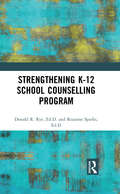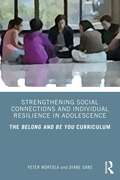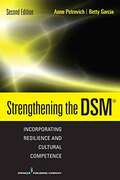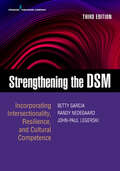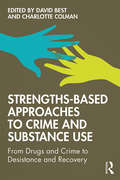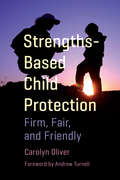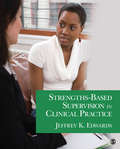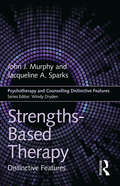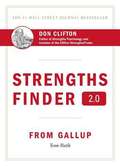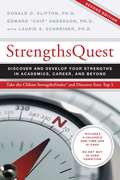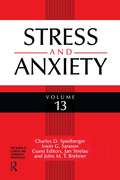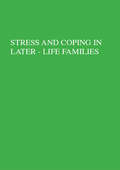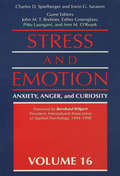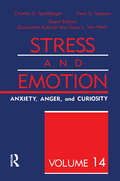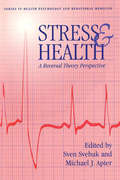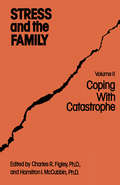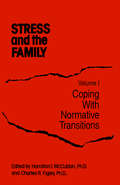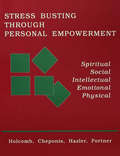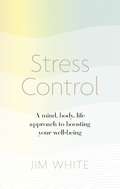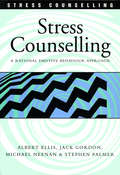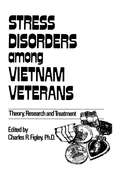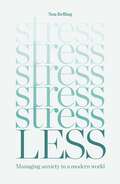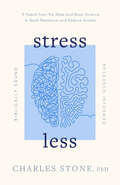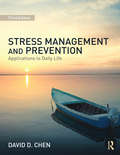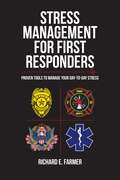- Table View
- List View
Strengthening K-12 School Counselling Programs: A Support System Approach
by Donald R. Rye Rozanne SparksStrengthening K-12 School Counseling Programs aims to help school counselors, counselors in training, school administrators, and other members of the school community develop and strengthen developmental school counseling programs. Providing a step-by-step approach to planning and managing a comprehensive developmental counseling program, this book encourages school and community-based counseling teams coordinate their efforts to design coherent, complementary programs rather than competing, fragmented ones.This second edition is significantly expanded, including additional information on preparing the advisory team and building a foundation of core beliefs and governing values. Also included is an example of a Counseling Program Activity Guide, as well as a chapter devoted to examples from the field from school systems in Arkansas, Missouri, Kansas and Tokyo, Japan.
Strengthening Social Connections and Individual Resilience in Adolescence: The Belong and Be You Curriculum
by Peter Mortola Diane GansThis book introduces a group counseling curriculum that provides both a foundation to confidently lead a counseling group for adolescents and inspiration for how a group leader can adapt and modify the text in a range of settings. The curriculum is three-fold, corresponding with the three major sections of the text. In Part One of the text, the authors provide a conceptual and practical way of understanding two matters: first, the critical leadership challenges faced by group counselors as well as the skills they need to navigate those challenges successfully, and second, the critical developmental challenges faced by adolescents and the skills they need to navigate those challenges successfully. Part Two introduces a nine-week social skills curriculum – Belong and Be You – designed and modified over ten years of use to help adolescents be better socially connected as well as confidently independent. Part Three provides an additional resource which is meant to be used in tandem with the curriculum: 40 strategic stories on four different themes contributed by faculty and students. This book will benefit school counselors and group counselors working with adolescents to successfully navigate group leadership and help students embrace themselves and find belonging.
Strengthening The Dsm: Incorporating Resilience And Cultural Competence
by Anne Petrovich Betty GarciaMental health practitioners have long recognized the failure of the DSM to address important sources of strength and resiliency that can significantly affect diagnosis and treatment, a deficit that has become more pronounced with the DSM-5’s elimination of the multiaxial format. The second edition of Strengthening the DSM® presents a new conceptual framework—the Diversity/Resiliency Formulation— that encompasses the whole person in order to promote effective diagnosis and treatment. It considers patient strengths, sources of resilience, support, and cultural identity that are essential to the accurate understanding of an individual, and demonstrates how mental health practitioners can draw upon these resources during treatment. The second edition also addresses significant changes resulting from implementation of the Affordable Care Act (ACA) and features a completely new chapter on trauma and stressor-related disorders.
Strengthening the DSM®: Incorporating Intersectionality, Resilience, and Cultural Competence
by Betty Garcia Randy Nedegaard John-Paul LegerskiThis essential companion to the DSM uniquely integrates intersectionality and resilience that helps mental health practitioners assess clients from a strength-based perspective. The third edition expands the section on neurocognitive disorders to include traumatic brain injury, includes more information on assessment and treatment of common childhood disorders, and brings a new focus on the impact of today’s culture wars and their impact on mental health professionals, policy, and clients Also new to the third edition is an emphasis on meta-analysis literature and a module on wellbeing discussing neuroscience and wellness concepts in relation to a strengths-based approach to diagnosis. By demonstrating how to practically integrate diversity and intersectionality into the diagnostic process rather than limiting assessment to a purely problem-focused diagnostic label, this successful textbook strengthens the DSM for social workers and other mental health practitioners by promoting the inclusion of intersectionality, resiliency, culture, spirituality, and community into practice. It includes multiple case studies featuring complex, real life scenarios that offer a greater depth of learning by demonstrating how a strength-based assessment of the whole person can lead to more effective and successful treatment. Discussion questions promote critical thinking, key points in each chapter highlight and reinforce important concepts, and abundant web resources encourage additional study. The book also includes a robust instructor package. Purchase of the print edition includes access to Ebook format. New to the Third Edition: Adds traumatic brain injury to neurocognitive disorders section Expands information on treatment of common childhood disorders Emphasizes meta-analysis literature Discusses neuroscience and wellness concepts in relation to a strengths-based approach to diagnosis Focuses on wellness and health care delivery in the context of today’s culture wars Key Features: Delivers a unique formulation integrating intersectionality and resilience to provide strengths-based assessment and treatment Demonstrates the rationale for strengths-based DSM practice Includes real-life case scenarios for complex problem-solving Uses a standard format for each disorder for quick access to information Reviews key literature on disorders and evidence-based best practices Provides classroom questions and activities to foster critical thinking Identifies professional and scholarly activities to promote increased effectiveness in diagnosis
Strengths-Based Approaches to Crime and Substance Use: From Drugs and Crime to Desistance and Recovery
by David Best Charlotte ColmanAlthough there is a strong and growing literature in the two areas of desistance and addiction recovery, they have developed along parallel pathways with little systematic assessment of the empirical evidence about the co-occurrence of the relationship or how one area can learn from the other. This book aims to fill that gap by bringing together emerging literature on the relationship between offending and substance use. Instead of focusing on the active period of its onset and persistence, this book examines the mechanisms that support desistance, addiction recovery, and the common themes of reintegration and rehabilitation. With contributions from a wide range of international experts in the fields of desistance and addiction recovery, the book focuses on a strengths-based, relational and community-focused approach to long-term change in offending and drug-using populations, as well as the shared barriers to effective reintegration for both. This book will be highly informative for a wide audience, from academics and students interested in studying desistance and recovery to those working in addiction services and the criminal justice system as well as policy makers and the people undertaking their own journeys to desistance and recovery.
Strengths-Based Child Protection: Firm, Fair, and Friendly
by Carolyn OliverStrengths-based, solution-focused practice is one of the most exciting areas of contemporary child protection work. The demand for this protection practice has increased faster than the availability of training resources to help students and practitioners, until now. Strengths-Based Child Protection is the first textbook solely dedicated to furthering strengths-based practices in a child protection setting. Carolyn Oliver provides an original, accessible, and practical research-based model that focuses on the key to success in this field: the worker-client relationship. Oliver’s long and varied front line experience in child welfare and research based on surveys and interviews with 225 child protection workers provides grounding in the realities of child protection work. Strengths-Based Child Protection contains a rich combination of case studies, reflective questions, and exercises that enable students and practitioners to conceptualize and master implementing strengths-based practices with children.
Strengths-Based Supervision in Clinical Practice
by Jeffrey K EdwardsMoving away from the usual medical-modeled framework of mental health focused on problems, Strengths-Based Supervision in Clinical Practice by Jeffrey K. Edwards takes a postmodern, social construction approach, looking for and amplifying strengths and encouraging stakeholders to use them. Based on research in brain science, as well as from the Information Age/Connectivity Age thinking, the book reframes the focus of supervision, management, and leadership to one that collaborates and builds on strengths with supervisees as competent stakeholders in their work with their clients.
Strengths-based Therapy: Distinctive Features (Psychotherapy and Counselling Distinctive Features)
by John J Murphy Jacqueline A SparksStrengths-Based Therapy: Distinctive Features offers an introduction to what is distinctive about this innovative client-directed approach. Written by two experienced practitioners of strengths-based therapies, this book translates SBT principles and practices into concise, evidence-based ideas and techniques that mental health practitioners can immediately apply on the job. Using the popular Distinctive Features format, this book describes 15 theoretical features and 15 practical techniques of Strengths-Based Therapy. Strengths-Based Therapy will be a valuable resource for psychotherapists, clinical, health and counselling psychologists, counsellors, psychiatrists, marriage and family therapists, social workers, and all who wish to know more about this unique approach to therapy.
StrengthsFinder 2.0
by Tom RathThis book helps readers discover their distinct talents and strengths and how they can be translated into personal and career successes.
Strengthsquest: Discover and Develop Your Strengths in Academics, Career, and Beyond
by Donald O. Clifton Laurie A. Schreiner Edward AndersonThis book and the strengths approach to achieving in academics, career, and beyond represent a revolutionary departure from traditional and counterproductive philosophies and practices. We hope that its principles resonate with you, and that you apply the strengths approach to achieving success in all of your life's endeavors!
Stress And Anxiety: Anxiety, Anger And Curiosity, Volume 17 (Clinical and Community Psychology)
by Irwin G. Sarason Charles D. Spielberger John M. T. Brebner Jan StrelauThis Volume Is Concerned With Emotional Reactions To Stress And Is organized in five parts dealing with stress and emotion theory; stress Conflict And Personality; Emotional Reactions To Stress; Physiological reactions to stress; and the relationship of type-A behaviour to heart disease.
Stress And Coping In Later-Life Families (Applied Psychology: Social Issues and Questions)
by Janis H. Crowther Daniel L. Tennenbaum Stevan E. Hobfoll Mary A. StephensA product of the Kent Psychology Forum 1989, the book focuses on how older adults and their families cope with the vicissitudes of later life.
Stress And Emotion: Anxiety, Anger, & Curiosity (Stress And Emotion Ser. #Vol. 15)
by Irwin G. Sarason Pittu Laungani Charles D. Spielberger John M. T. Brebner Esther Greenglass Ann M. O’Roark"First Published in 1996, Routledge is an imprint of Taylor & Francis, an informa company."
Stress And Emotion: Anxiety, Anger, And Curiosity (Series in Stress and Emotion: Anxiety, Anger, and Curiosity #Vol. 15)
by Irwin G. Sarason Charles D. Spielberger Zsuzsanna Kulcsár Guus L. Van HeckThis volume, based on an international conference on current research in Stress And Emotion, Covers, In Four Sections, Theoretical Aspects, perception, cognition and emotion, the physiological and biological Concomitants Of Emotion And Type A Behaviour And Emotion.
Stress And Health: A Reversal Theory Perspective (Health Psychology and Behavioral Medicine Series)
by Michael J. Apter Sven SvebekFirst published in 1997. Routledge is an imprint of Taylor & Francis, an informa company.
Stress And The Family: Coping With Catastrophe (Psychosocial Stress Series #No. 2)
by Charles R. Figley Hamilton I. McCubbinFirst Published in 1983. Routledge is an imprint of Taylor & Francis, an informa company.
Stress And The Family: Coping With Normative Transitions (Psychosocial Stress Series #No. 2)
by Hamilton I. McCubbin & Charles R. FigleyFirst published in 1983. Routledge is an imprint of Taylor & Francis, an informa company.
Stress Busting Through Personal Empowerment
by Thomas F. Holcomb George John Cheponis Richard J. Hazler Eileen McPhillips PortnerExcessive stress has become one of the world's leading health hazards, taking its toll on loved ones, friends and co-workers. Through books, magazines and newspaper articles, people are constantly exposed to the problem - but are not shown how to affect their own personal solution. Hard work, commitment and personalisation of problem areas are the keys to successful stress busting. Showing how to do the necessary work in a personalised format, this workbook provides varied exercises to help reach the goal of mastering stress. The authors feel that every individual can develop Personal Empowerment Skills - basic talents, abilities, and coping strategies that everyone has at their personal disposal - once they realise they are responsible and in control of their lives.
Stress Control: A Mind, Body, Life Approach to Boosting Your Well-being
by Jim WhiteStress is part and parcel of life. We all get it. Think of blood pressure. If you are alive, you have blood pressure. If you are alive, you have stress. If your blood pressure gets too high, you should do something about it. The same is true with stress and this book will help you to control it.Stress can be a mixture of anxiety, depression, panic feelings, poor sleep, low self-confidence, low self-esteem and a poor sense of wellbeing. It is one of the most common problems in the world today. But controlling your stress doesn't have to mean expensive therapy or a long waiting list for a referral to a service. This book will teach you to become your own therapist:· Learn about stress and how it affects you· Follow straight-forward steps to get an instant sense of control· Develop a set of linked skills for long-term stress management· Boost your wellbeing· Feel in control of your futureThis accessible, jargon-free book combines clinically proven methods from cognitive behavioural therapy (CBT), positive psychology and mindfulness to give you the tools you need to improve your mind, your body and your life.
Stress Counselling: A Rational Emotive Behaviour Approach (Stress Counselling #11)
by Albert Ellis Michael Neenan Stephen Palmer Jack Gordon`The text is clear and easy to follow with vivid sessional excerpts that illustrate the theoretical dialogue′ - International Review of Psychiatry `The publication proves to contain much instructive and practice-oriented material′ - Nursing Standard Stress Counselling is a comprehensive study of the theory and practice of the Rational Emotive Behaviour approach applied to stress counselling and psychotherapy. Albert Ellis pioneered Rational Emotive Behaviour Therapy (REBT), which has since been adopted internationally. This approach enables the clients to embark on a course of effective counselling which has a clear beginning and end. This book discusses techniques and solutions to common problems and also provides guidance on conducting group work. Its comprehensive coverage includes additional material on techniques such as skills training, relaxation methods, hypnosis and biofeedback.
Stress Disorders Among Vietnam Veterans: Theory, Research (Psychosocial Stress Series #Vol. 1)
by Charles R. FigleyFirst published in 1978. Routledge is an imprint of Taylor & Francis, an informa company.
Stress Less
by Noa BellingJourney Through the Chakras is a comprehensive guide to the inner workings of the chakra system from an age-old Indian spiritual, metaphysical and tantric perspective. The book dives deep into one of the most ancient structures of the spiritual body. With both anatomical and physiological views, it deconstructs the complexities behind the system, explaining the chakras in a simple fashion that is accessible to anyone. Discover how to work with the chakras in your subtle body and begin your journey towards deeper spiritual healing as you learn: • how to harness universal and human energy • the chakras and their connections to the body • spiritual attributes to each chakra • sacred chakra mantras and meditations • kundalini awakening • aromatherapy and crystals for chakra balancing • mudra and yoga practices for chakra healing and much more
Stress Less: 9 Habits from the Bible and Brain Science to Build Resilience and Reduce Anxiety • Biblically Sound • Research Informed
by Charles StoneWe&’re living in a stressed-out world. According to a poll from the American Psychological Association more than a quarter of U.S. adults say they&’re so stressed they can&’t function. But it&’s not just adults. Teenagers and children are also experiencing the negative effects of stress. Blending brain science, biblical truth, and best practices, Stress Less provides hope and healing. From his PhD research, pastor Charles Stone presents nine actionable insights for those battling stress or who have friends or family with fear and anxiety. Stone writes about biblical characters who successfully and unsuccessfully navigated stress and shares how he&’s responded to the stresses in his life, including a cancer diagnoses, heart issue, pre-diabetes diagnosis, and depression.Stone answers the questions: What is stress?What does stress do to the body and brain?How do we build resistance to stress? He shows how changes in thinking, feeling, sleep, spiritual practices, and relationships can help us thrive through life&’s stresses. Readers learn how gratitude and soaking your soul in Jesus can cultivate a life of greater well-being and joy. While we can&’t eliminate the stressors of life, we can learn to navigate them with courage and grace. This timely resource is a practical guide for anyone who feels the creep of stress, who desires freedom and peace, and who wants to Stress Less.
Stress Management and Prevention: Applications to Daily Life
by David D. ChenGain a critical understanding of the nature of stress from a positive psychology framework that allows you to look beyond a simple pathology of stress-related symptoms. This new edition of Stress Management and Prevention integrates Eastern and Western concepts of stress while emphasizing an experiential approach to learning through the use of exercises, activities, and self-reflection. This student-friendly text contains chapters on conflict resolution, mindfulness meditation, time management, prevention of health risks, and cognitive restructuring. Included throughout are an emphasis on mindfulness and the neuroscience behind it, more theories, and new techniques for stress reduction and time management. An updated companion website includes even more video-based activities so students can see techniques in practice.
Stress Management for First Responders: Proven Tools to Manage Your Day-to-Day Stress
by Richard E. FarmerThis book is about the effects of stress on our nation’s people who are involved in police work, corrections, firefighters and related fire service employees, rescue and ambulance staff, emergency medical personnel including doctors and nurses, and member
